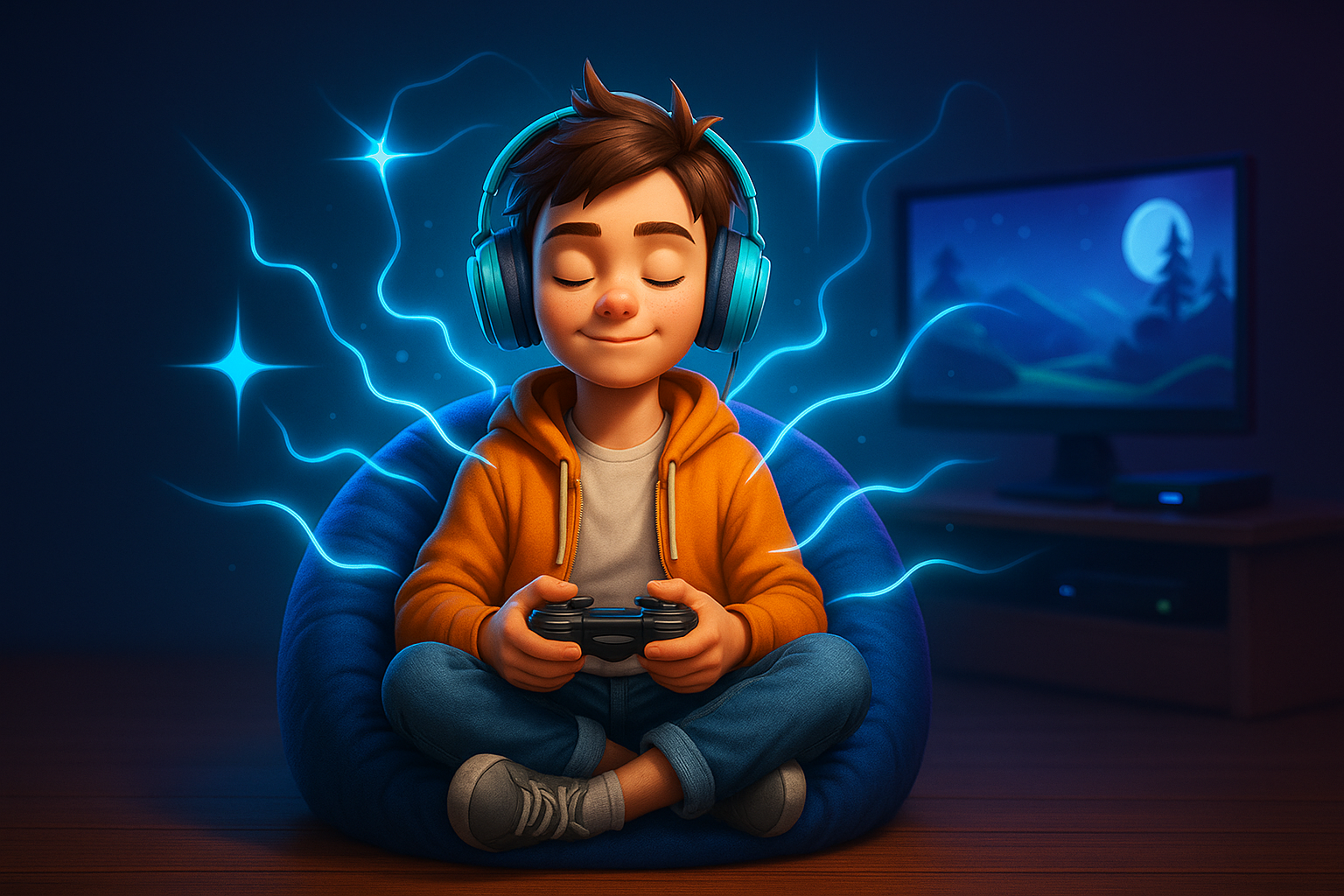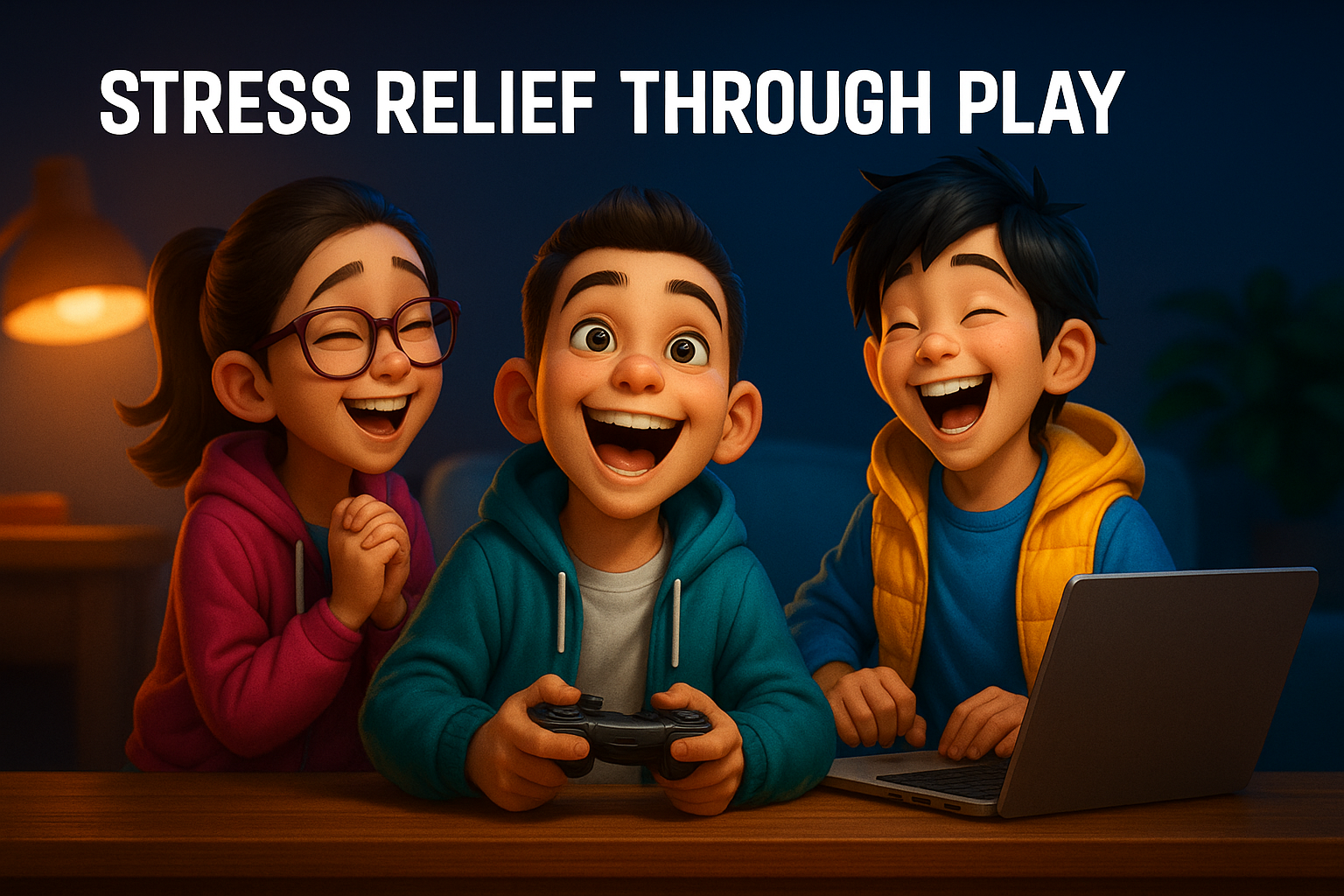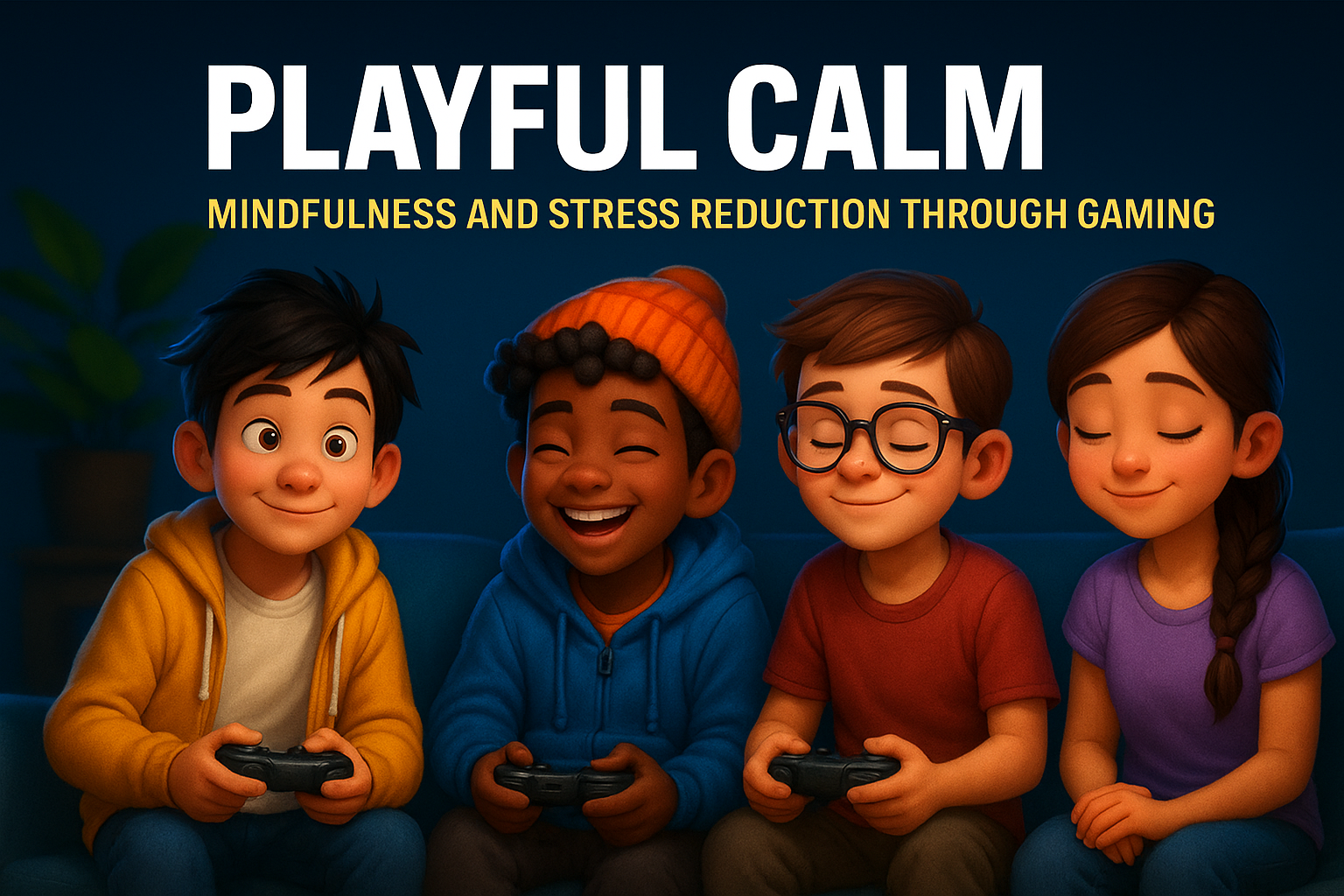April 23, 2025
Playful Calm – Mindfulness and Stress Reduction Through Gaming
Surprisingly to many, video games can also be tools for mindfulness and relaxation. It’s not all high-adrenaline action – there are many games and gaming moments that promote calm, focus, and even meditative states. In terms of SEL, this means play can help children learn mindfulness techniques and ways to manage stress. Think of a child quietly building a zen garden in Minecraft Creative Mode or losing themselves in the soothing music of a puzzle game. When used thoughtfully, games can become a form of “playful calm” – engaging and fun, yet calming to the mind and body.
Flow State & Relaxation
Ever notice how kids can be completely absorbed in a game, oblivious to outside distractions? That deep focus is known as the flow state, and it’s very similar to mindfulness meditation. Psychologists like Mihály Csíkszentmihályi describe flow as being fully present and engaged in an activity – time seems to melt away
(shutupandyoga.com). Gaming is particularly good at inducing this state
(shutupandyoga.com). When children enter flow during a game, they experience a form of active mindfulness, where their attention is in the present moment. This can be incredibly stress-relieving. In fact, even simple casual games have been shown to improve mood and ward off anxiety. One review found that a quick game of Angry Birds or a similar easy-to-play title can boost players’ spirits, promote relaxation, and reduce stress after a long day (medindia.net). So, a little bit of screen time with the right game can actually help your child unwind and reset emotionally, much like a short meditation or a breathing exercise might.

Stress Relief Though Play
Rather than escalating kids’ energy, certain games actually soothe. Some titles explicitly incorporate calming gameplay – for instance, games where you care for virtual pets, grow a garden, or explore beautiful environments tend to have a calming effect. Research in child psychology supports this stress relief benefit: playing in these low-pressure digital environments can lower the body’s stress response (reducing fight-or-flight hormones) and leave kids feeling more relaxed (southwesthealth.org). Many parents are pleasantly surprised to find their child calmer after half an hour of creative sandbox gaming or gentle puzzle-solving. These games provide a healthy escape where children can clear their mind, focus on simple tasks, and breathe easier. Importantly, they also teach kids to use play as a coping tool – when homework or life feels overwhelming, taking a short mindful play break can help them regain composure and emotional balance.

Mindful Breathing & Biofeedback
Developers and researchers have even created video games specifically to teach mindfulness and calming techniques. A great example is a game called RAGE Control (Regulate and Gain Emotional Control), which was designed for kids with anger issues. It plays like a space-alien shooter, but with a twist: the player wears a heart rate monitor, and if they get too excited or upset (heart rate goes too high), the game disables their ability to shoot
harvardmagazine.com
harvardmagazine.com
. To win, kids literally have to calm themselves down by using deep breathing or relaxation techniques – otherwise, the game penalizes them. In clinical trials, children who were reluctant to try traditional meditation eagerly spent hours mastering this game, unknowingly practicing mindfulness to keep their heart rate steady (harvardmagazine.com). Another innovative game, MindLight, uses a neurofeedback headset to teach anxious kids how to relax. In MindLight, players navigate a spooky world that only lights up when they stay calm; if the player’s anxiety rises, the game darkens. By learning to control their breathing and thoughts to brighten the game, children learn real-life calming skills. Amazingly, studies showed that after just 6–8 sessions of this “brain-training” game, kids’ anxiety levels dropped by half, a result on par with standard cognitive therapy
gemhlab.com
. These examples show how game-based mindfulness can be both engaging and effective.
Family Mindfulness Fun
Parents can get involved too – playing a relaxing game together can become a family mindfulness activity. Whether it’s a round of a peaceful game like Flower or Journey, or simply sitting with your child as they show you their tranquil Minecraft creation, games offer new ways to practice calm and focus as a family. By framing it as “quiet play time,” you can teach your child that whenever they feel stressed or overwhelmed, a few minutes of mindful play can help restore calm. This blends the best of both worlds: the comfort and engagement of digital play with the proven techniques of mindfulness and stress reduction. Embracing “playful calm” in your household might just turn screen time into a soothing break that benefits everyone’s emotional well-being.

